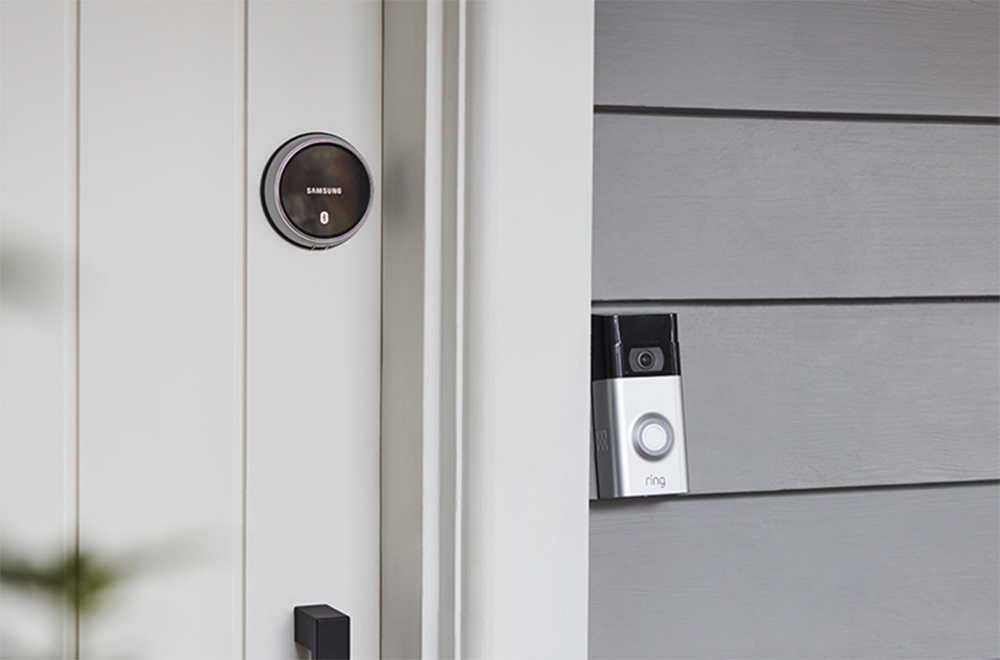The rise of smart products in homes is changing the way many people live. For people with disabilities these items are not only improving accessibility but becoming life changing as they empower people to live more independently.
Via the Internet of Things, objects such as watches and household appliances can now have connectivity built into them. These ‘smart’ products can be controlled by a smartphone or computer, even away from home and be managed via a hub or single apps can be used to control individual devices.
For people keen to be more independent, smart doorbells, lights and security cameras make homes more accessible and safer.
“Security products can often be how a customer begins their smart home journey, purchasing a smart doorbell, security camera or light,” Bunnings buyer Nathan Monk said. “We find these products help build confidence with customers who then look to explore the range further. Smart home products also have the ability to make everyday life easier, especially for those with disabilities and the elderly.”
Smart lighting assists in increasing access and visibility and makes remodeling a home just to fit in a light switch at a suitable height redundant. Instead people can simply tap their smartphone screen to turn a light on or off. The same goes with smart curtains, shades and blinds, which can be hard for people with mobility issues to operate.

It can be difficult to press the buttons on traditional garage door openers if there is limited hand strength. Now garage doors can be opened from anywhere. Smart video doorbells help those who can’t easily get to their front door – these devices have motion-sensing cameras that shows who is at the door, even when not at home. Smart door locks and entry systems are also highly accessible. These allow people to come and go without keys and also monitor who enters a person’s home when they are not there.
Dave Woodbridge, Vision Australia senior adaptive technology consultant Dave Woodbridge said: “Using smart assistance such as Google Assistant or Siri on a smartphone allows people who can’t speak or be understood by a traditional smart speaker to be able to ‘type’ questions to the personal assistant rather than using their voice.
“Smart TVs, like the Samsung Smart range allow blind or low vision access to controlling the TV, such as changing the channel or source (Foxtel to Xbox etc.) via having the TV speak to them or displaying the menus in high contrast print on the screen.
“When a device may not be accessible to someone who is blind (such as a touchscreen coffee machine or touchscreen washing machine), using an app on a smartphone can make these appliances accessible. For example, a person can use their accessibility options on the smartphone or tablet via the app that then operates the coffee or washing machine.”
A hub product such as Google Home, Amazon Echo or Apple HomePod allows people to control devices at homes by using their voice. Woodbridge said people can set timers, reminders, alarms, create shopping lists, play music and listen to books, control air-conditioning and vacuum cleaners and do internet searches from where they are sitting.
A new hub product on the market is the Unisono Sofihub, is designed for people who require a level of care at home. The machine understands the habits and movements of the home’s inhabitant and then, if behaviours change, the device asks if the person is OK. If there is no response their carer is contacted.
Another new product is BindiMaps. It is a mobile app that enables people with vision impairment to navigate with confidence as they move through unfamiliar indoor spaces such as shopping centres and airports. It employs a simple, natural-language audio system to describe where users are, what’s around them and the best way to get to their chosen destination. The technology is based on a network of Bluetooth beacons, a sophisticated mapping and route-guidance system, and smartphone sensors.
“A consideration for customers is internet usage and speed to power smart products in the home. Larger houses and properties may have internet ‘dead spots’, so customers may need to look into range extenders or mesh network systems to streamline usage,” Monk added.
Subscribe to the F2L newsletter
Join over 7,500 subscribers for the latest news, products, services and technologies for the disability and rehabilitation sectors. Subscribe here.

